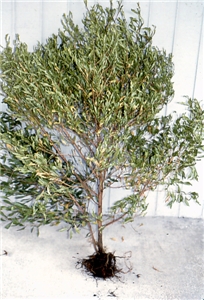Definition
Root rots can be caused by biotic factors (living organisms such as plant pathogens) or by abiotic factrors (e.g., environmental problems such as flooding). Most root rot diseases are caused by plant pathogenic fungi (e.g., Rhizoctonia sp., Pythium sp., Phytopththora sp. and others). As roots become infected and begin to rot, uptake and translocation of water and nutrients may fail. This leads to plant yellowing and wilting and eventually death in some cases. Root rots tend to occur in areas of poor drainage or in heavy soils. Infection of roots by other pathgogen groups such as root-knot nematodes and bacteria can also lead to root rot.
Discussion
Root rots can be caused by biotic factors (living organisms such as plant pathogens) or by abiotic factrors (e.g., environmental problems such as flooding). Most root rot diseases are caused by plant pathogenic fungi (e.g., Rhizoctonia sp., Pythium sp., Phytopththora sp. and others). As roots become infected and begin to rot, uptake and translocation of water and nutrients may fail. This leads to plant yellowing and wilting and eventually death in some cases. Root rots tend to occur in areas of poor drainage or in heavy soils. Infection of roots by other pathgogen groups such as root-knot nematodes and bacteria can also lead to root rot.





